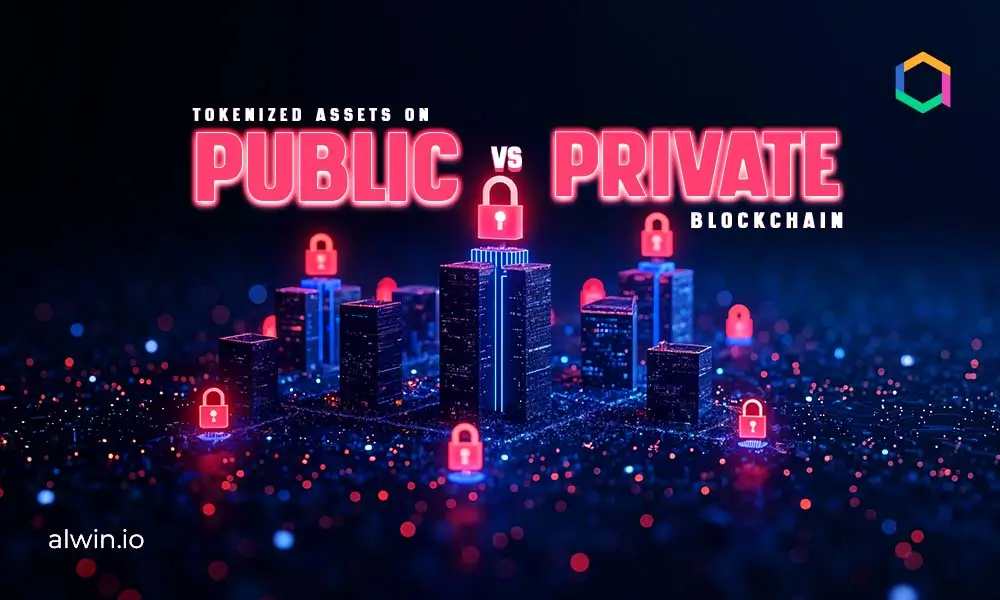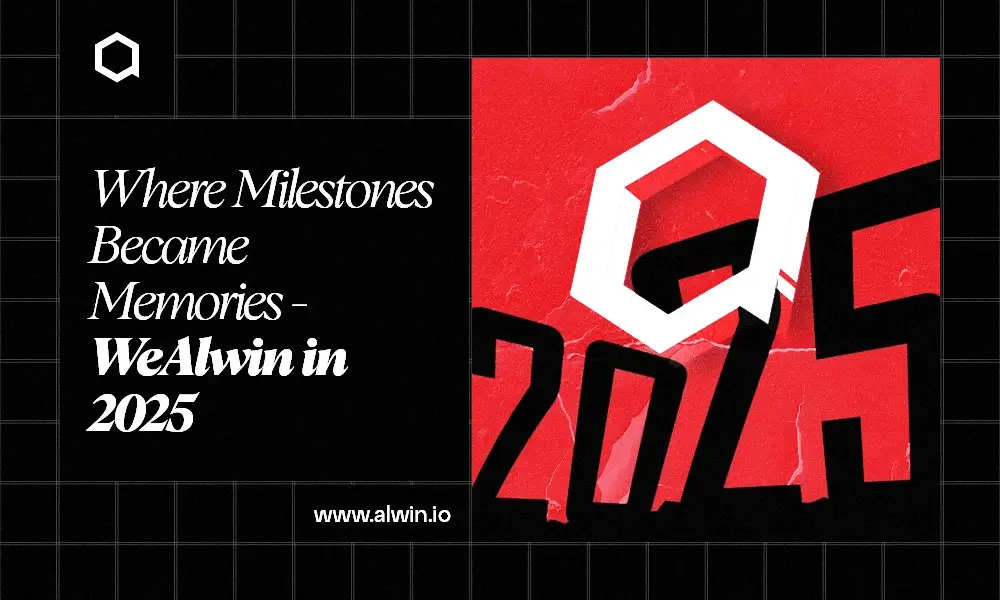Imagine acquiring a fraction of a luxurious villa or a rare piece of art by simply clicking a button. Does that sound futuristic? This is becoming a reality. This innovative concept has been gaining force as blockchain technology continues to redefine the way we think about ownership and investments. However, when it comes to tokenizing assets, a crucial question arises: should we use public blockchains or private blockchains?
In this article, we will take a closer look at how tokenized assets work, compare the differences between public and private blockchains, and explore their implications for various industries. Whether you are a business looking to tokenize assets or an investor exploring this new frontier, it is important to understand these concepts to make wise decisions.
What Are Assets Tokenized?
Before we learn about blockchains, let's understand what tokenized assets are. To put it simply, tokenization means turning ownership of something into a digital token that is stored on a computer network called a blockchain. These tokens show how much you own the thing they represent.
For example:
A $1 million property can be tokenized into 1,000 tokens, each worth $1,000.
An artwork valued at $500,000 could be divided into 500 tokens, with each token representing 0.2% ownership. By using tokenization, people can invest in expensive assets without needing to buy the whole thing, making it easier for more individuals to participate. It also allows these tokens to be traded quickly and transparently on digital platforms, removing the need for traditional middlemen like brokers. In short, tokenized assets make owning and trading valuable items simpler, more accessible, and more efficient for everyone.
Private and Public Blockchain
A private blockchain is like a closed, exclusive book club where only members who have been invited are permitted to read and contribute. It is a blockchain that is restricted and controlled by a specific organization or group, specifically designed for utilization within a defined network.
A public blockchain is similar to a digital open book that anyone can read, write, and help maintain. It is a decentralized network wherein all transactions and data can be accessed by anyone with an internet connection. There is no central authority controlling it, which makes it open and inclusive for everyone.
Public vs Private Blockchain for Asset Tokenization
Asset tokenization is a game-changing innovation that allows physical or intangible assets to be digitized and traded more efficiently. Let's see how the public and private blockchains stack up when it comes to tokenizing items.
Transparency
Public blockchains, such as Ethereum, offer complete transparency. Trust and accountability are promoted by the visibility of all transactions and ownership records on the network. For example, a real estate platform tokenizing properties on a public blockchain ensures that potential buyers or investors can independently verify ownership details and transaction history.
Private blockchains keep information hidden from unauthorized parties. This restricts who can see or examine transactions. A corporation tokenizing its internal equity on a private blockchain may limit access to employees and stakeholders for confidentiality.
Accessibility
Public blockchains are open to everyone, enabling global participation. Allocating fractional shares of high-value assets to anyone makes asset ownership more democratic. A closed network is where private blockchains operate. Tokenization and trading can only be done by approved users.
Security
Decentralization makes public blockchains extremely secure against manipulation or unauthorized modifications. They are not immune to hacking attempts if smart contracts or protocols are poorly designed. Some smart contract flaws have been exploited despite the robust decentralization of the platform.
The controlling entity safeguards private blockchains, making them less vulnerable to outside threats. However, their centralized nature makes them more vulnerable to internal threats or manipulation.
Scalability
Public blockchains encounter scalability difficulties owing to the substantial demand and the necessity for consensus among a vast network of nodes. This may result in slower transaction speeds and higher costs. Ethereum network congestion has sometimes led to delays in transactions and expensive fees.
Private blockchains have been optimized for speed and efficiency, enabling the handling of a significant volume of transactions with minimal delay. A private blockchain used by a supply chain network can be used to tokenize and track goods without hurdles.
Cost
Public blockchains can be expensive due to transaction fees, which can rise during periods of high activity. Tokenizing assets on Ethereum may incur higher costs than other platforms, especially during network congestion. Private blockchains are more cost-effective since they operate in a controlled environment with fewer participants.
Benefits of Tokenized Assets on Private Blockchains
Control and Permissioning
Improved Privacy
Faster Transactions
Benefits of Tokenized Assets on Public Blockchains
Decentralization and Trust
Increased Liquidity
Global Accessibility
Transparency
Use Cases for Private Blockchain in Asset Tokenization
Decentralized Finance (DeFi): Tokenized assets like cryptocurrencies or real estate are used as collateral in lending/borrowing platforms.
Art and Collectibles: Tokenization of unique assets (e.g., NFTs) for global trading.
Crowdfunding: Democratizing investment in large projects like real estate developments.
Use Cases for Private Blockchain in Asset Tokenization
Corporate Equity: Tokenizing company shares for employee stock options or private investors.
Supply Chain Assets: Tracking goods and digitizing inventory on a secure network.
Enterprise Resources: Tokenizing internal assets like intellectual property for management and auditing.
Public or Private Blockchain for Asset Tokenization?
Choosing between a public or private blockchain for asset tokenization depends on your goals:
Opt for a public blockchain if your priority is transparency, global access, and decentralized control. This is ideal for democratized investment opportunities and open ecosystems.
Choose a private blockchain if you require privacy, control, and scalability. It’s the better option for regulated industries and internal enterprise applications.
In some cases, a hybrid approach that combines public and private blockchain features may provide the best of both worlds, enabling flexible solutions for diverse tokenization needs. Ultimately, the right choice depends on the nature of the asset, the target audience, and the level of control desired.
Closure
What’s the final say on tokenized assets? Should they reside on public or private blockchains? The answer varies based on your objectives, the nature of the assets, and your intended audience.
Public blockchains like Ethereum are your go-to if you're looking for openness, transparency, and global accessibility. They're great for democratizing ownership and for creating trustless environments where anyone can get involved. You can think of them as the bustling public square in the world of blockchain.
If privacy, control, and efficiency are the top priorities, private blockchains are the way forward. They are designed for businesses and organizations that need tailored solutions, secure environments, and strict regulatory compliance, similar to an exclusive, members-only club.
The ideal approach might even be a hybrid one, combining the openness of public blockchains with the flexibility of private ones. Tokenization is changing how we think about asset ownership, and both public and private blockchains possess their strengths. It's less about which one is better and more about which one aligns with your vision when choosing the right platform. One thing is for sure blockchain tech, whether public or private, is paving the way for a broader and more effective financial future.



